Yesterday morning was a Western Kingbird bonanza along the Antelope Island causeway. Typically I see this species individually, in pairs or occasionally in small groups but there was a flock of about 50 birds feeding in insects in the rabbitbrush on the south side of the causeway road and they were a blast to photograph as they did so.
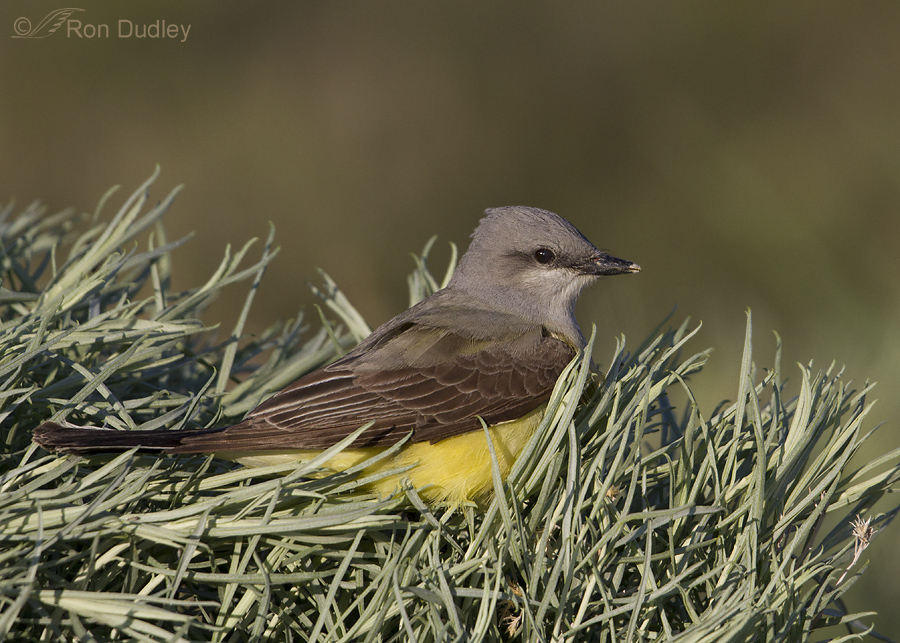
1/3200, f/6.3, ISO 640, Canon 7D, Canon EF500mm f/4L IS II USM +1.4 tc, not baited, set up or called in
I like this shot of one of them nestled in the spring greenery.
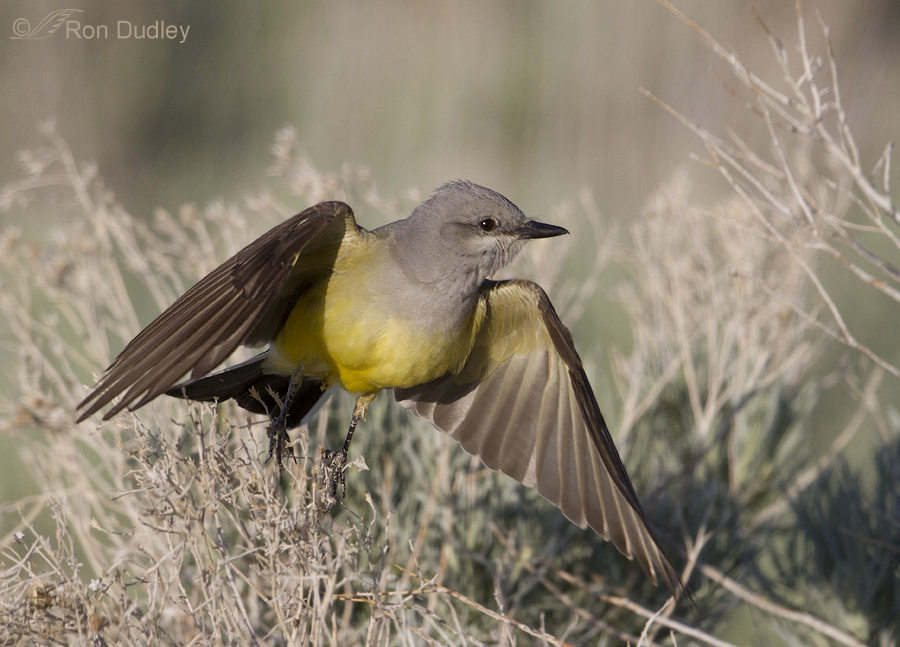
1/5000, f/6.3, ISO 640, Canon 7D, Canon EF500mm f/4L IS II USM +1.4 tc, not baited, set up or called in
But most of the time they were very actively hunting insects at the tops of the rabbitbrush. The action was quite frenetic so I often needed fast shutter speeds that weren’t particularly easy to get in the soft, early morning light. This kingbird is taking off for another hunting perch.
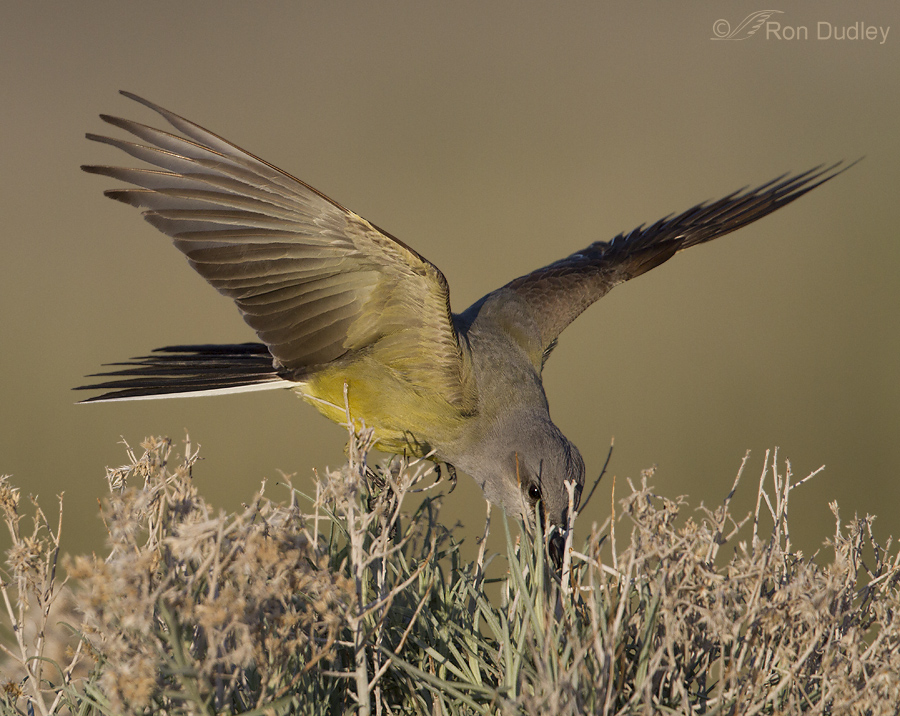
1/3200, f/5.6, ISO 640, Canon 7D, Canon EF500mm f/4L IS II USM +1.4 tc, not baited, set up or called in
Typically they would sit at the top of the perch or hover over it and scan the rabbitbrush very near them for insect prey. When they spotted something they would often plunge into the foliage to retrieve it. This bird didn’t have to go far…
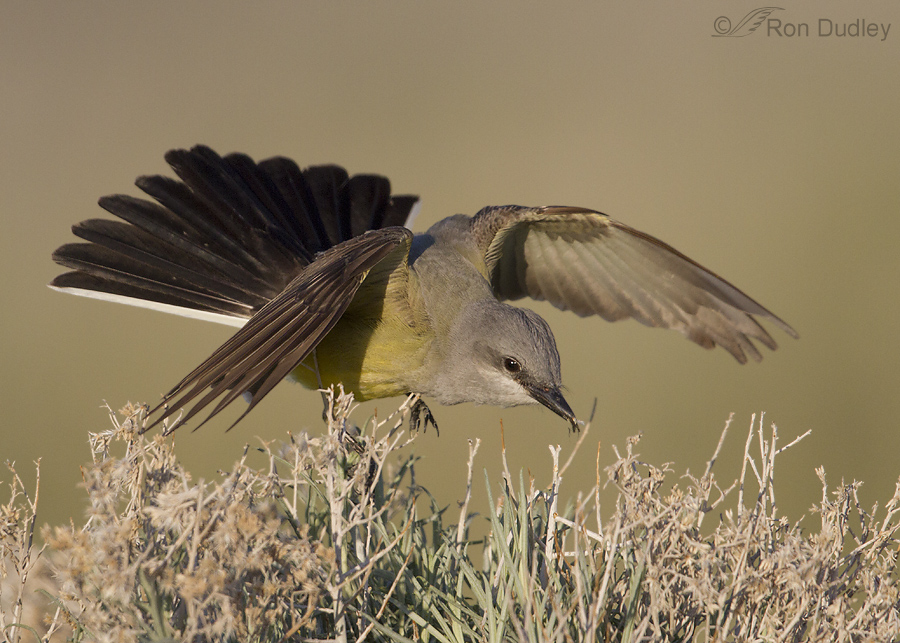
1/3200, f/6.3, ISO 640, Canon 7D, Canon EF500mm f/4L IS II USM +1.4 tc, not baited, set up or called in
to pluck out a snack.
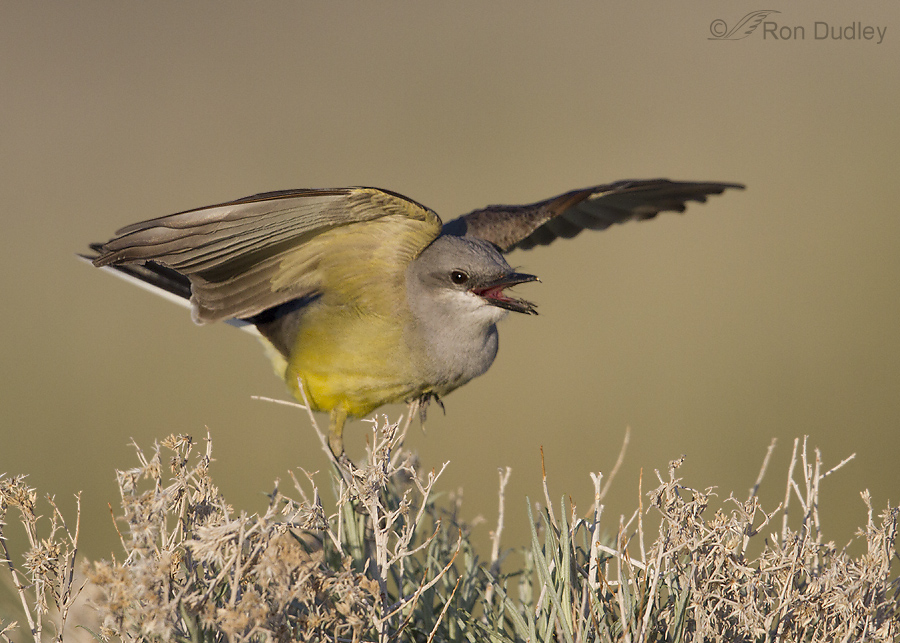
1/3200, f/6.3, ISO 640, Canon 7D, Canon EF500mm f/4L IS II USM +1.4 tc, not baited, set up or called in
and then quickly swallow it. There was a moderate breeze blowing that made their unstable perches even more precarious during the feeding action so they often used their wings for stabilization which allowed some interesting poses. I lost critical focus for this shot so the bird isn’t quite as sharp as I’d like (I applied some extra sharpening) but I wanted to include it to show the bird “savoring” its snack.
Antelope Island was disappointingly slow for much of the winter and early spring but if yesterday was any indication the tides have changed for the better – it was the best morning for birds we’ve had out there in a very long time!
Ron


I live in Vernal, Utah, in the Unitah Basin of north eastern Utah. For the past few days I have had what I first ID’d by looking and reading websites, as a Couch Kingbird, at my hummingbird feeders. Then I looked at their range and see that we are way out of it so I am wondering if it is a western or tropical (which we are also out of range for). I don’t think it is a Cassin.
My bird is yellow on its throat and up into his face. The descriptions of these kingbirds do not include yellow up that far. It also has a stripe of white across its wing.
This bird will occasionally use the feeder that it can stand on to access the feeder holes, but the openings are small and I think that may be why it seems to prefer the glass ball one, which has larger openings, but it has to hang upside down from the hook to do this.
I have some poor quality pictures of it upright on the feeder. His is skittish and I haven’t been able to catch him hanging upside down yet.
Ron – It seems as though you enjoy what you’re doing, as is demonstrated in your stunning photographs, you select photos that you enjoy which in turn we enjoy and I thank you for that. What I get out of your beautiful photos that is unique, is your narrative that brings us to the location with you. I am relatively new to this hobby of photographing birds, wildlife and scenery and I use a Nikon Coolpix P510 “bridge” camera. I’ve been rather pleased with it and have a few pretty good shots, but I really wish I could upgrade to a regular DSLR. Birds in flight are all but impossible with the camera I have and I don’t have a single descent shot of one. Finances dictate that I am unable to keep up with current trends in photographic equipment so I will have to continue to appreciate the work of others and I’m okay with that. Thank you again, I really appreciate your adventures and the awesome shots you share.
Thank you very much, Cori. I enjoyed your comment and appreciate the frustrations of wanting to get flight shots without the gear usually required to do so. I was in the same boat for a long time but it finally happened. Hope it does for you too, and soon…
These are absolutely delightful! Even a silent photo can raise a song in the heart…
Ooh,oh the dreaded dentist appointment, you have my heartfelt concern and well wishes.
Great shots Ron, the images look like you were having a blast! Many thanks for sharing.
Thank you so much for all the nice comments, everyone. I’ve been out shooting all morning (had a wonderful time and photographed quite the drama, as you’ll likely see on tomorrow’s post). And in a few minutes I leave for a dentists appointment (from the sublime to the unpleasant today…) so I’m afraid I don’t have the time to respond individually to comments, though they are all very much appreciated.
And yes, Susan – many species other than hummingbirds hover.
ooo Ron love the wing spread on the 2nd and 4th images!!!! As always, a joy to view!!
Wonderful medley of shots. Love the third frame, but worry about their eyes when they dive into brush like that. The soft yellow oF their underwings and breasts is a beautiful accent.
A beautiful series of photos. I was not aware that birds other than hummingbirds could hover. Interesting. I think the third photo is my favorite because the bird’s position is so unexpected, and also for the way it shows off the feathers.
Susan, here is a partial list of birds I have seen hovering: American Kestrel, White-tailed Kite, Red-tailed Hawk, Ruby-crowned Kinglet, Yellow-rumped Warbler, Barn Swallow… I’m sure there are more. Kites are amazing, they hold their heads absolutely still while flapping their wings madly, even in strong wind.
Thanks, Tim. I will keep my eyes open for hovering birds. I appreciate that there are so many knowledgeable people who contribute to this blog. It’s always interesting to learn.
Another chapter of the magnificente “Birds Behavior Book” by Ron Dudley.
Beautiful images.
Thank you so much for sharing.
Wonderful to see these! As a Wildlife Rehabber, I raise quite a few of these as babies/fledglings, but never get to see this end of things. Thank you for the evocations!
Beautiful sequence of photos!
Your shots are incredible! Thanks so much for sharing them.
Charlotte